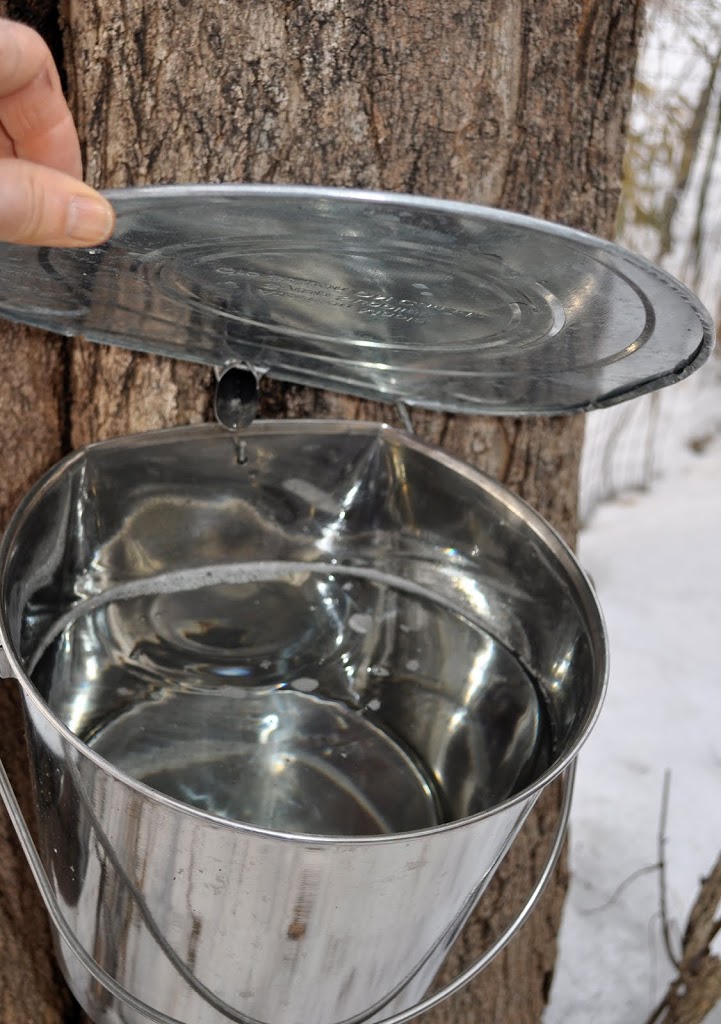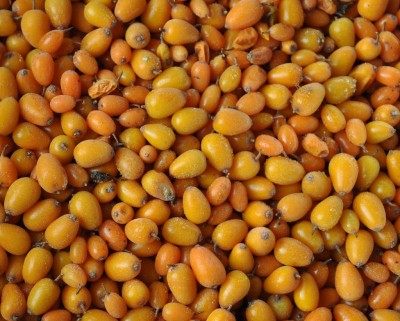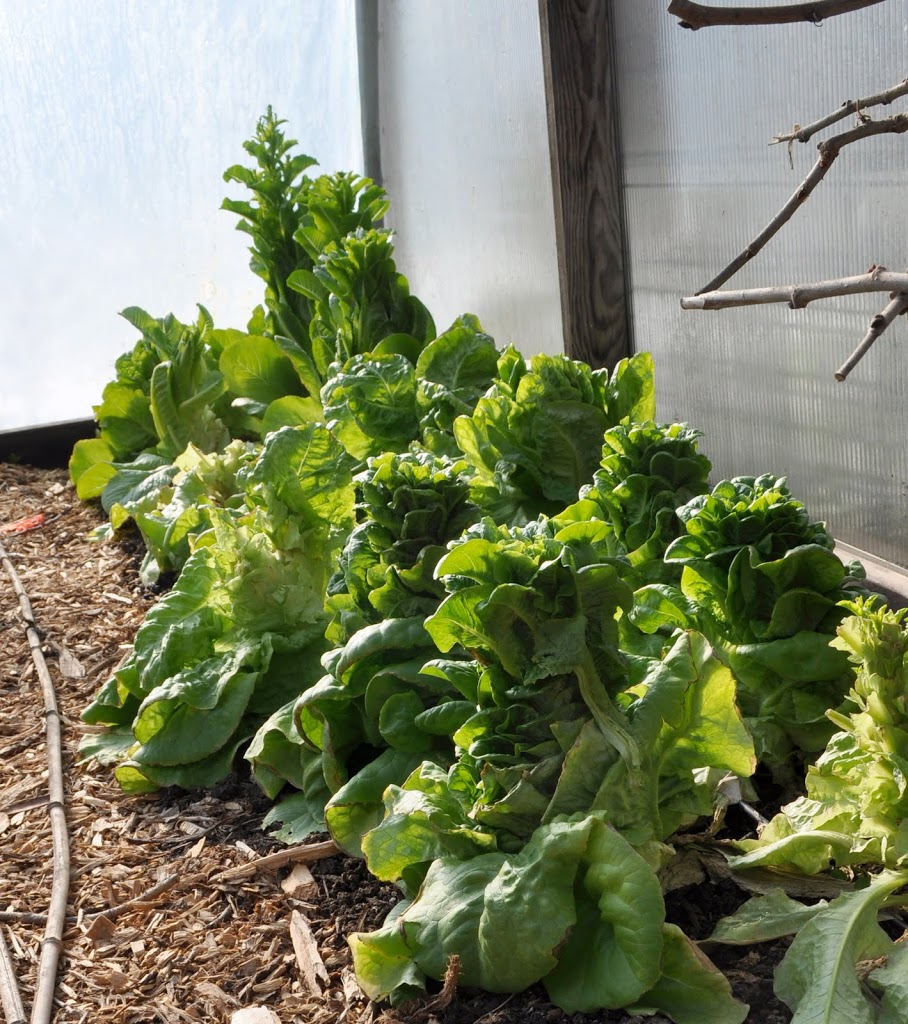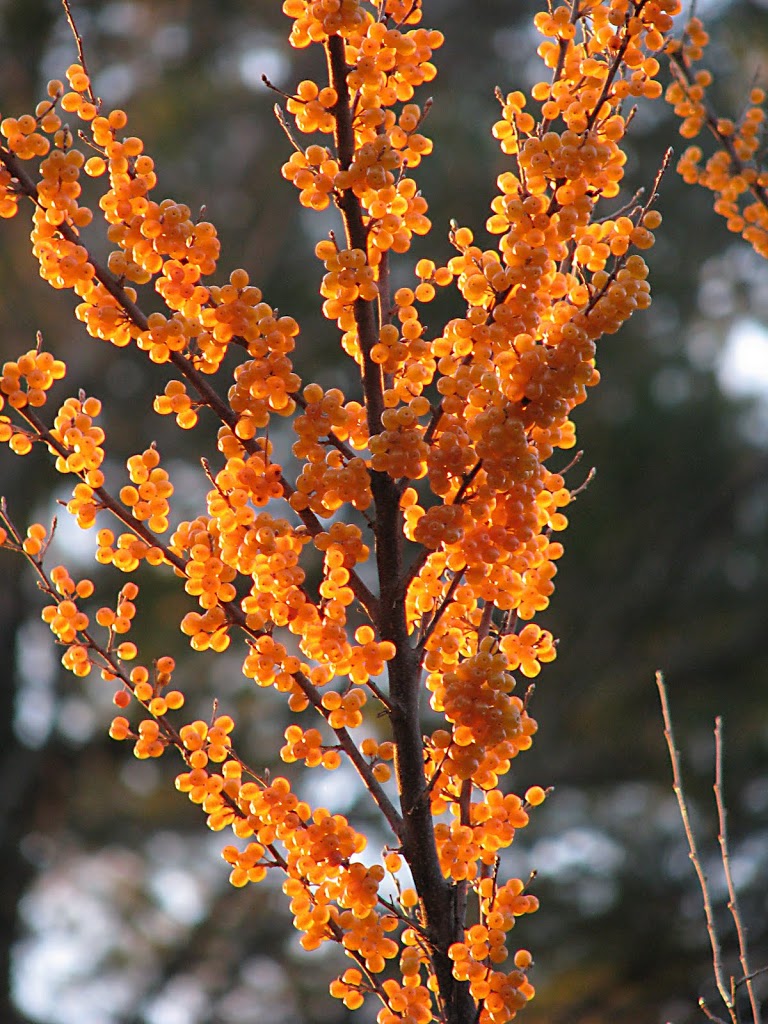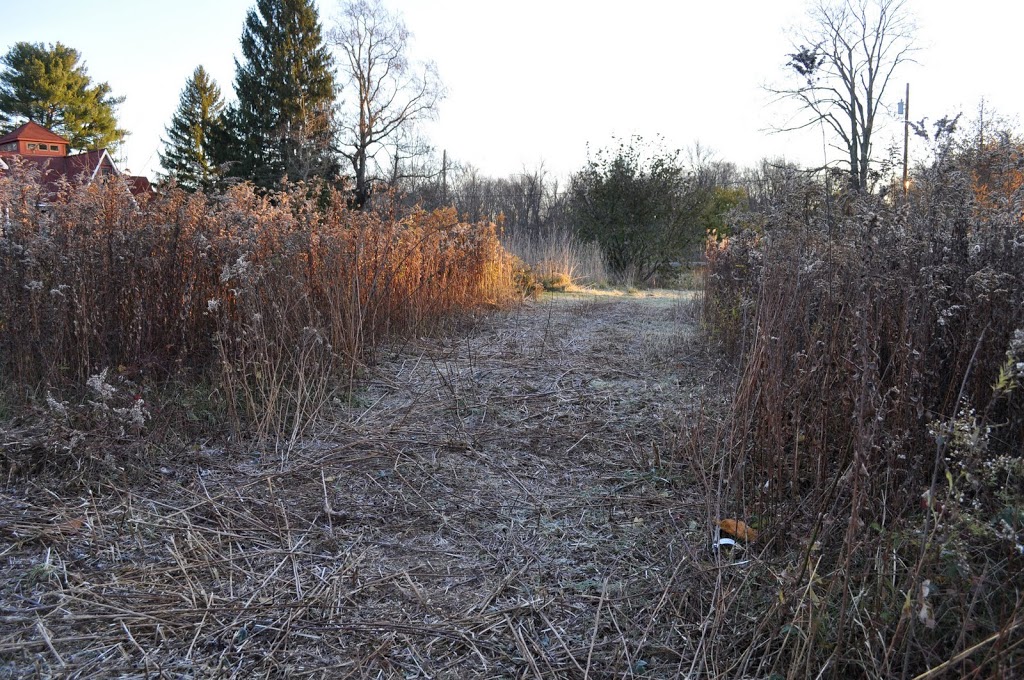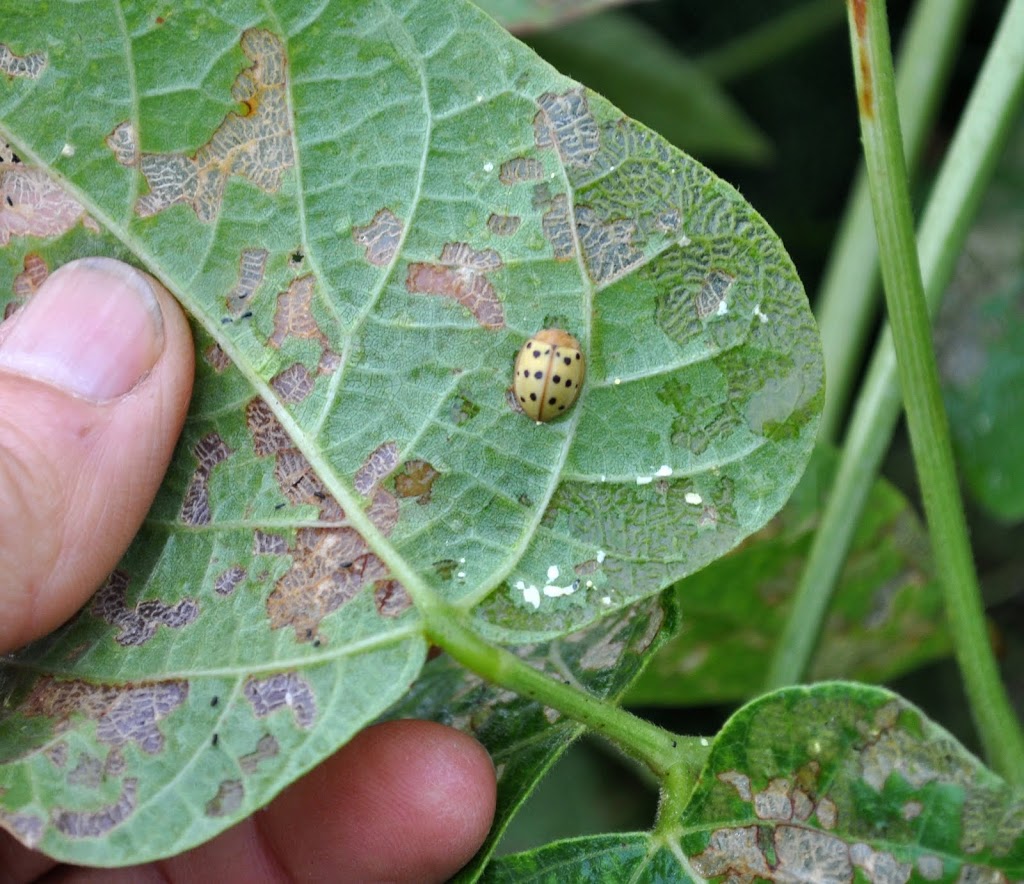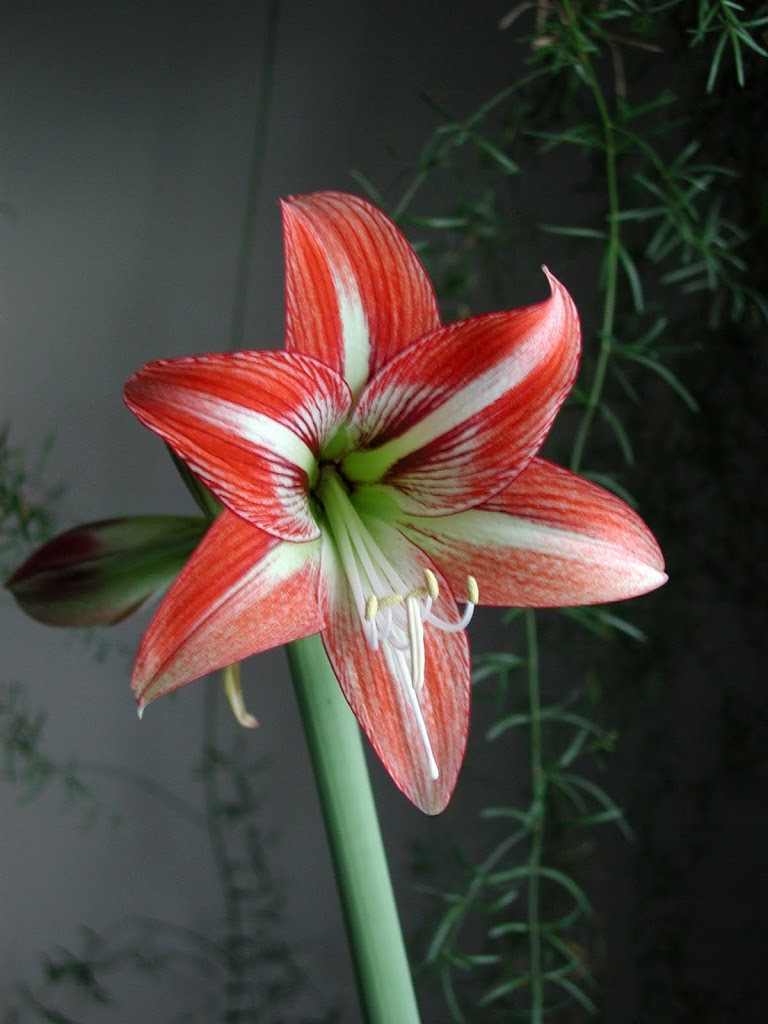[seaberry, wheat, spring indoors]
/0 Comments/in Gardening/by Lee A. Reich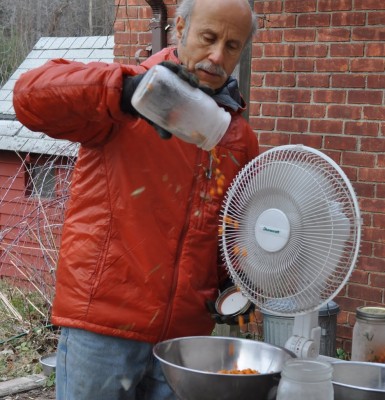
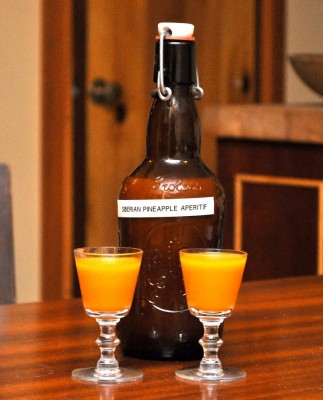 I next turned to the bowl of tawny stems and grains that’s been sitting on the kitchen table for a couple of months. That bowl represented the sum total of my wheat harvest, planted in spring into 3’ by 3’ of garden bed.
I next turned to the bowl of tawny stems and grains that’s been sitting on the kitchen table for a couple of months. That bowl represented the sum total of my wheat harvest, planted in spring into 3’ by 3’ of garden bed.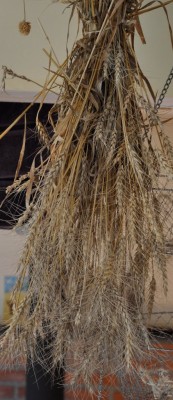
[pomegranates, greenhouse lettuce, bad black walnuts]
/4 Comments/in Gardening/by Lee A. Reich
I oversee, in all probability, the biggest pomegranate farm in Ulster County, perhaps New York State, even the Northeast. My planting recently expanded by 200 percent with the 4 new plants that arrived at my doorstep a couple of days ago. My farm is biggest because so few people in this part of the world grow pomegranates and, if they do, they might have one plant.
Pomegranates are an up and coming plant. Their health benefits have been highly touted, perhaps with some hyperbole. They are beautiful shrubs or small trees with traffic-stopping red (sometimes white or pink) blossoms. Best of all is the fruit’s flavor, combining the richness of berries with the tang of citrus.
Unfortunately, pomegranates are not adapted to growing in this part of the world. They hail from the Mideast, much the same region as figs, where winters are mild and moist, and summers are hot, dry, and sunny. Yet, I, along with many other gardeners, do grow figs, coddling them through winter by growing them in pots brought indoors, in a greenhouse, or swaddled in the ground or, where winters aren’t bitterly cold, in various insulating blankets. Why not do the same with pomegranates? Stems of both plants tolerate temperatures down to about 15° F.
Well, not exactly the same. Figs bear fruit on new wood so you can harvest a crop even if the stems die back, as long as they don’t die back too much. Pomegranates bear fruit on older wood, which needs to survive winter to bear fruit. Pomegranates also need a long season to ripen. And they don’t like humidity, and especially rain near harvest, or the fruits burst open.
All of which is why 12 to 18 inch diameter pots are what my pomegranates call home. I move these pots to my cool basement for winter. I move them outside as soon as the weather warms in spring to get them started early, and inside temporarily if frost threatens. I can move them under cover when rains threaten.
Commercial pomegranates in the U.S. are of varieties from warmer parts of the Mideast. The varieties I am growing are from colder regions — central Asia and Russia — so should better tolerate colder winters. With global warming, I may eventually try overwintering some of these plants outdoors. These varieties also ripen their fruits in shorter seasons. My plants — with exotic names like Kazake, Salavatski, and Sverkhranniy — have yet to flower and fruit. I’m looking forward to harvesting a selection of pink, red, sweet-tart, and sweet pomegranates in the next couple of years.
—————————————————-

A few more years of greenhouse gardening and I may get the hang of it. Up to a few weeks ago, I was so proud of all those beautiful lettuce seedlings I had transplanted into the greenhouse in September, as they swelled up into beautiful buttery and crunchy heads. Now, though, a number of them have telescoped out their once-compact heads in preparation for flowering and going to seed.
Lettuce typically switches to this flowering mode when days are 12 hours, or more, long. Around here, daylight hours through most of September are a bit more than 12 hours long. Still, I couldn’t wait too long to plant because, planted after September, lettuce grows ver-r-r-r-r-y slowly.
And daylength isn’t the only player here; temperature also plays a role, with hotter temperatures coaxing forth those flower stalks, especially when coupled with long days. On sunny days in early autumn, temperatures in the greenhouse did soar to 90°.
There is consolation. When lettuce starts to flower outside during hot, long days of summer, the leaves take on a slightly bluish cast and turn tougher and bitter. Leaves of my bolting greenhouse lettuces are still deep green, succulent, and flavorful.
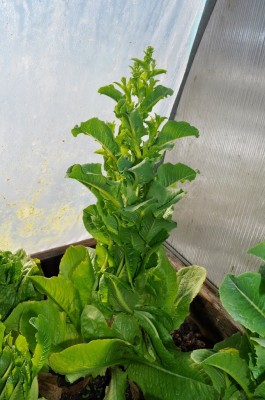
—————————————————-
Another disappointment, one without a saving grace, are the black walnuts. Back in September, we harvested as usual. Deb took off the husks, I laid the de-husked nuts out to dry, and then packed them away in baskets for a few months of curing. So far, just about all the nutmeats I’ve cracked out are thoroughly dried out or rotten, black, and inedible.
Why? Perhaps it was the summer’s drought. Perhaps the newly husked nuts stayed too wet before being packed away. Perhaps something’s amiss with our old tree. I’ll check some walnuts a friend harvested from a different tree to see if the problem is widespread. Perhaps the late frost affected early nut development. Next September, I’ll check a few nuts when we harvest them.
As consolation, I turn to the words of Charles Dudley Warner (My Summer in a Garden, 1871), “The principle value of the garden . . . is to teach . . . patience and philosophy, and the higher virtue – hope deferred, and expectations blighted, leading directly to resignation, and sometimes to alienation. The garden thus becomes a moral agent, a test of character, as it was in the beginning.”
[cool bot]
/0 Comments/in Gardening/by Lee A. Reich
Man can’t live on greens alone. But I still have no need to go to a store to round out my vegetable fare. Much of what grew in last season’s garden is in storage, on tap for when I need it. Besides the usual frozen green beans, corn, okra, and edamame, steamed, cooled with a fan, then packed into freezer bags, and the usual canned tomatoes, a lot of vegetables are in cool storage.
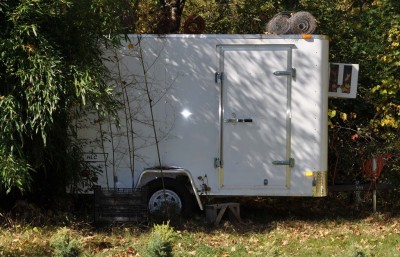
That cool storage could have been my refrigerator, except that no refrigerator is spacious enough for a winter’s worth of turnips, winter radishes, beets, and leeks, and a few heads of cabbage. A couple of years ago I built a walk-in cooler. Saving money and energy, I cool this cooler with CoolBot (www.storeitcold.com), a nifty device that tricks a window type air conditioner in believing it has not reached its pre-set minimum temperature of 60°F. I set the indicator on my CoolBot to 40°F., and there it stays. I also have some boxes of apples and pears in there, as well as, up to a couple of weeks ago, pawpaws.
As temperatures continue to drop outdoors, the CoolBot will no longer be needed. Then I’ll move all the boxes to my unheated mudroom. As temperatures drop even more, the boxes will go down into my basement, the temperature of which should by then have dropped into the 40s.
It’s amazing, if you sleuth around your house with a thermometer, especially a house built more than 50 years ago, how many different temperature zones you find. Below 40°F but above freezing is ideal for most fruits and vegetables, except for tropical fruits, sweet potatoes, and winter squashes, which like slightly warmer temperatures.
[autumn olive, painting trees for winter, fritillaria propagation
/1 Comment/in Gardening/by Lee A. Reich
Okay, I’m braced for an attack. Imagine a fruit, ripe for the past few weeks, with a pleasantly aromatic, sweet-tart flavor. My informal “surveys” have shown very positive response to plates of the fruits brought to various gatherings; the fruits disappeared. The berries are small, yellow or red, with a silvery flecking on the outside and a soft, edible seed within.
The bush bearing these fruits is no slouch in appearance. It’s got silvery leaves and pale yellow flowers that individually don’t amount to much but together suffuse the plant with a soft haze in spring, a sweetly fragrant haze. Care needed for this bush is zip, nothing, rien, nada. And with that beauty, fragrance, and lack of trouble, I get oodles of fruit, much more than I could eat.
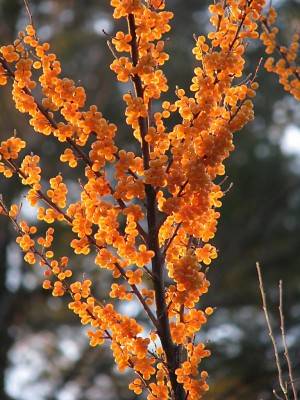
Now I’m ready to duck for attack . . . the plant is autumn olive. There, I’ve said it. Yes, the plant, a native of Asia, is invasive, readily colonizing roadsides and abandoned meadows. Native plant purists and invasive plant police scorn this bush for its fecundity. It was introduced into this country over a hundred years ago as a plant for wildlife food and cover, and to improve soils such as those covered with mine spoils. (Microorganisms associated with the roots take nitrogen from the air and put it in a form plants can use, like fertilizer.)
I am not advocating planting autumn olive. But, as long as it’s here, I am advocating enjoying it. The fruits are also very healthful, so says USDA research touting the fruit’s high lycopene levels, research evidently done by a different branch of the USDA than the one working on invasive plants. Just think, every berry I (or you) enjoy is one less berry eaten and seed spread by birds.
****************************************
On an even lighter note, I spent an hour or so over the last two days painting some of my trees. The goal was not for them to put on a better face for winter, but for them to better face winter. Cold and furry animals are what will threaten these trees in the coming months.
Cold per se is not the problem. The problem is warmth, then cold. The dark trunk of a tree, especially a young one, is warmed by direct sunlight on bright, crisp winter days. As the sun drops below the horizon, bark temperature plummets, to the chagrin of the tree.
Deer, rabbits, and mice are the furry threats, eating trees from, respectively, the top branches to the lower branches and bark to the trunk, again, especially young trees. Two dogs, a bit of fencing, and ‘Deerchaser’ (en effective electronic repellant) keep deer at bay.
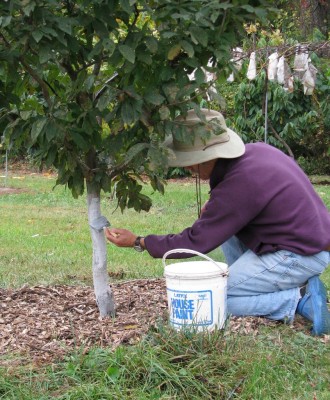
The paint that I brushed onto trunks and the lower branches is for the cold (actually, the warmth), the rabbits, and the mice. I made my own concoction, starting with a goopy mix of old, unfired, porcelain clay from Deb’s studio, white latex paint, and enough water to make it all thick and creamy. The white color of the mix will reflect the sun’s rays to prevent bark warming.
I also put a few eggs into the mix to make painted trunks and lower branches unappealing to vegetarian rabbits and mice, which they all are. And finally, to further hit home the idea that these trunks and branches aren’t for eating, into the mix went some garlic powder, cinnamon, and cayenne. I’m hopeful that the clay, if the mix stays on through next summer, will also deter some boring (as in “hole making” rather than “uninteresting”) insects.
The trees don’t look at all bad with this cosmetic touch.
*******************************************
I’m on my way to becoming the crown king of crown imperials. That’s a plant, Fritillaria imperialis, a plant of which I am a big fan. Problem is that crown imperials are very expensive, selling for anywhere from $10 to $30 for each bulb.
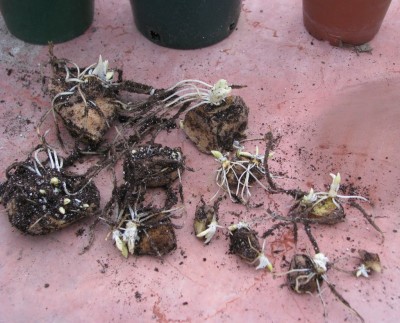
About 20 years ago my father grew tired of a crown imperial plant he had purchased just a couple of years earlier. So he offered it to me, and it’s been planted and flowering every April since then in a corner of the vegetable garden.
After enjoying that solitary bulb for a few years, I got to thinking that nurseries must multiply them, so why couldn’t I? And I did. And I did. And I did. And I still am.
Propagation of crown imperial starts with removing a piece of a scale from the bulb. The scale pieces go into a bag of slightly moist potting mix that’s kept warm for a few months, then cool for a few weeks. Little bulblets soon form on the scales, which can be potted up to grow until warm spring weather arrives.
I can just imagine looking out at my gardens some April years hence, the scene a sea of 2’ high heads of green stalks, each topped with a round, leafy crown below which dangles a ring of orange blossoms. End results notwithstanding, I’m always amazed — as I was this morning — to open the bag I filled last June 29th with amorphous scales and potting soil to be now filled with roots and bulblets.
[to do, persimmon, peppers]
/0 Comments/in Gardening/by Lee A. Reich
And I thought I was just about finished for the year. Ha! The long farmden “to do” list I made early this morning makes a mockery of such thinking. No particular rush for any one thing on the list although once snow falls almost everything will need to be pushed forward to next spring. Shudder the thought. I know what spring is like.
Perhaps today I’ll begin with the small meadow on the south side. It — or part of it — needs mowing, which I used to do with a scythe. That much mowing of the dense mix of grasses and perennials was a bit much for a scythe, resulting in tennis elbow (scythe elbow?) a few years ago. Nowadays a tractor and brush hog make quick work of the mowing.
People sometimes ask if I’m going to expand my plantings into the meadow, to which I reply with an emphatic, “No!” The meadow is already home to a row of dwarf apple trees, a row of hardy kiwis and grapes, a row of pawpaws and black currants, a row of filberts, and a few chestnut trees. Any more planting and this will be a farm rather than a farmden.
I’m also leaving most of the meadow intact because of a promise I made to my daughter when she was 8 years old and enthralled with Laura Ingalls Wilder. That meadow had to stay as Genevieve’s prairie.
Anyway, leaving a bit of wildness seems like a good thing, a foil for all the coaxing and manipulating of plants I cultivate. “In wildness is the preservation of the world,” wrote Thoreau. I agree.
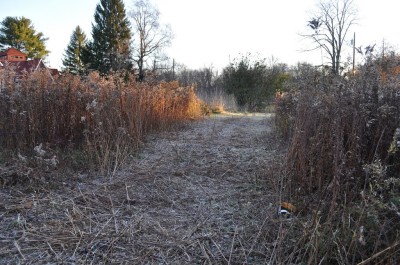
The meadow does get some care in the form of a once a year mowing. Mowing keeps vines and shrubs from invading, the first step to becoming a forest. Although it would be nice to have the mowing out of the way before spring, the tawny, old grasses and dried seed heads of goldenrods and bee balm are nice to look at through winter. So the portion in view from the dining table remains unmowed except for some welcoming paths I’ll cut through the chest high sea of dry stems.
************************************************
American persimmon fruits would never sell, especially this time of year when the golfball sized orbs hang shriveling on branches. Even their bright, persimmon orange color has faded on its way to an unappealing purplish gray. “Americans eat with their eyes,” bemoaned Cornell’s apple breeder to me many years ago.
The taste of American persimmons and the effort needed to grow them should put this tree near the top of anyone’s must-grow plant list. Southerners familiar with this native plant might turn their noses up at persimmons if they’ve tasted only wild ones. The secret to a delectable persimmon is to grow a named variety and, this far north, one that will reliably ripen its fruit within our growing season. My two choices are the varieties Szukis and Mohler. Mohler started ripening in August and Szukis, which began in September, will be good for a few more weeks. Neither variety needs the separate male pollinator tree that wild persimmons need in order to fruit.
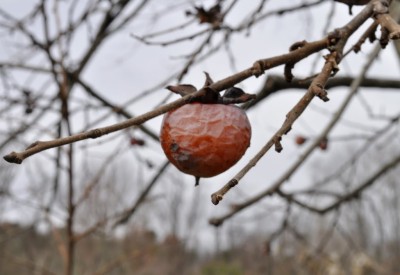
These top-notch American persimmons are kin to Asian persimmons seen in markets, with a few notable differences. American persimmons are smaller, softer (much too soft to ship commercially), and richer in flavor. Imagine a dried apricot that’s been soaked in water, dipped in honey, then given a dash of spice. That’s American persimmon at its best. All this from a tree that’s pretty, doesn’t need pruning, and has no pests worth bothering about.
(For more about both Asian and American persimmons, their history, their cultivation, their propagation, their use, and their varieties, see my book Uncommon Fruits for Every Garden.)
*********************************************
“It was the best of times, it was the worst of times” . . . this year in the garden for peppers (with apologies to Charles Dickens).
For best reliability and flavor, and early ripening to red, Sweet Italia has, for decades been the pepper to grow. This year, fruit set was poor and many peppers rotted before they ripened. Intense heat at critical moments this summer could have hampered fruit set. Sweet Italia is a floppy plant and, for the first time this year, I neglected to prop the plants upright in conical tomato cages. Flowers too hidden from insect pollinators and fruits close to or on the ground are also likely contributors to this year’s problems.
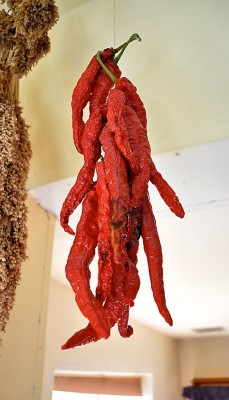
It was the best of times for a couple of new pepper varieties I grew: Big Red and Mariachi, both semi-hot peppers, the first one long and thin and the second one cone-shaped, both ripening to red. These two varieties did get staked.
Big Red was the big winner, ripening oodles of peppers, enough to eat, to freeze, to hang up indoors and dry, and to have ripe and “fresh,” even now, from almost ripe fruit brought indoors a couple of weeks ago. The same could be said for Mariachi, but yields were lower. Both taste very good and the hotness can be regulated by including more or less of the seeds and inner membrane, the seat of hotness, when eating or cooking them. Ar-r-r-r-iba.
[pitcher plant, cotton, last bagged grapes]
/3 Comments/in Gardening/by Lee A. Reich
In? Out? In? Out? I can’t decide where to grow the two pitcher plants that I got at Broken Arrow Nursery a few weeks ago. One of them, purple pitcher plant (Sarracenia purpurea), is quite cold hardy so could — should — survive outdoors in the ground. The other, Scarlet Belle (S. wrigleyana), is less cold hardy, but could probably rough it through our winters. Both plants, and especially Scarlet Belle, with pale white leaves having prominent, deep-purple veins, are so spectacular that I’d hate to lose either one.
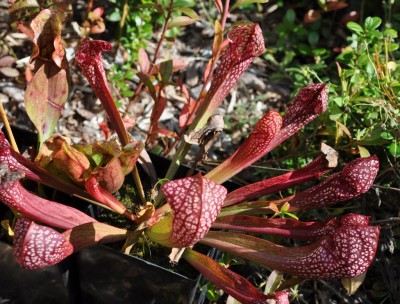
These plants are as fascinating as they are attractive. Their leaves are long, vertical tubes that, with their purplish color and nectar, entice insects within. Once inside, insects can’t climb out because of the stiff, downward-pointing hairs on the sidewalls. Eventually the insects drown in the pool of water that collects inside the tube, to be digested by enzymes from the flower, helped along, especially as a leaf ages, by resident bacteria, rotifers, and other organisms. Once everything has been pre-digested, the plant can eat.
So, where to plant these gems? Indoors, in pots in a cool, sunny room? Or outdoors, in the ground?
I think my two plants will be happier outside as long as I long can find the proper spot for these rather site-finicky plants. Their needs: full to partial sunlight and a very acidic soil that is consistently wet, high in humus, and low in nutrients. Well, that turns out to be just the conditions in the bed along the east side of my house that is home to lowbush blueberry, lingonberry, mountain laurel, huckleberry. and rhododendron.
The bed is not quite wet enough for the pitcher plants so I’m going to bury a saucer, such as used beneath potted plants, a foot or so in the ground beneath each plant. The saucers will act as in-ground reservoirs to collect and hold water. The veined leaves of the pitcher plants should echo nicely the speckled flowers of hellebore that bloom further back in that bed. Both kinds of flowers are eerily beautiful.
***********************************************
Call me a cotton pickin’ fool if you want. Yes, I did try to grow cotton in this cotton-unfriendly climate. I won’t admit to the “fool” part, but I surely am “cotton pickin”. Harvest has begun. Four plants, four ripe bolls. I could easily triple that yield if I brought the 18-inch-high plants indoors or into the greenhouse to finish ripening the rest of their bolls. And this is no fish story, of which cotton has had its share. In medieval Europe, cotton was imported but people had no idea from whence the fibers came. That was clarified in 1350 by John Mandeville, who explained: “There grew there [India] a wonderful tree which bore tiny lambs on the endes of its branches. These branches were so pliable that they bent down to allow the lambs to feed when they are hungrie.”
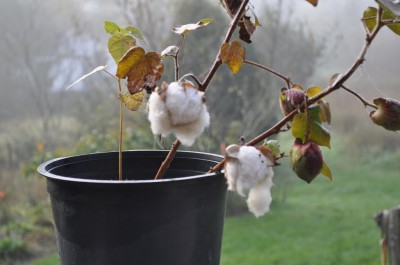
To be of use, my cotton will need to be processed. First, I’ll pluck out the seeds, something that would be easier if I had a cotton gin. I can do without; four bolls won’t be too much trouble. Then comes carding, to clean and align the fibers. Card clothing, as the tool for carding is called, is made from closely spaced wire pins embedded in a sturdy rubber backing. I remember, as a child, seeing women in white cotton caps pulling cotton strands apart with such tools at historic colonial sites. The wire brushes I have for cleaning sheddings from my dogs might the perfect stand-in for card clothing.
(Even more authentic would be to card using teasel plants, which occasionally grow wild along sunny roadsides. The word “carding” comes from carduus, Latin for teasel.)
Once carded, the fibers can be twisted and pulled into one, continuous strand. Finally, weave. Sounds like a lot of work for an organic, home-grown handkerchief!
**************************************************
Remember my bagged grapes, the ones in bags on which happens to be stamped the words “Fresh Delicious Wholesome Baked Goods?” Those bags have done their job well of fending off insects, diseases, and birds so the bunches can hang a really long time.
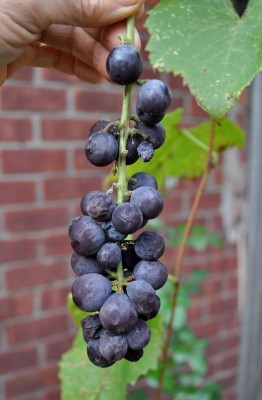
I thought the grapes were all eaten, but yesterday, discovered an overlooked, bagged bunch. The red Reliance grapes within didn’t have a lot of eye appeal, having started to shrivel and turned very dark. But their flavor was supreme, the result of being very ripe and, perhaps, exposure to a few frosts.
*******************************************************
[first frosts, cool weather veggies, stilt grass]
/0 Comments/in Gardening/by Lee A. Reich
Saturday night, October 9th, while I was enjoying myself at a friend’s party around a bonfire, my garden experienced it’s first autumn frost. Temperatures plummeted to about 28 degrees F. The frost was not unexpected, so basil and pepper plants had been draped with old blankets and other pieces of cloth, the two pressure regulators and filters for drip irrigation lines had been swaddled in additional scraps of cloth, and any tender houseplants had been brought indoors or moved to protected places.
My low lying patch of ground in the Wallkill River Valley is a particularly cold spot. Still, twenty-eight degrees was colder than I expected; many nearby gardens didn’t even experience light frost. Despite the covers, peppers and basil were blackened by frost.
Yet I wasn’t disappointed. On average, the first killing frost of fall strikes even earlier than October 9th around here. (The date for Albany, NY, for which temperature records have been compiled for decades, is around September 19th; adding a degree or two for my more southerly garden still puts the average first frost date back more than a week.) So my garden got an extra couple of weeks or so of frost-free weather.
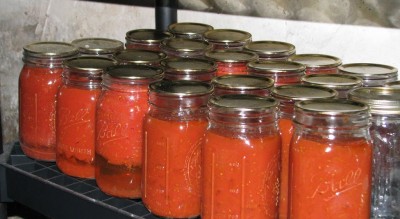
Also, with cooler weather and lowering sun, peppers, tomatoes, basil, and other summer vegetables have been petering out anyway. I’ve had my fill of summer vegetables, helped along by knowing about 40 quarts of canned tomatoes, half a dozen quart jars stuffed with dried tomatoes, and the few quarts of canned salsa on shelves in the basement.
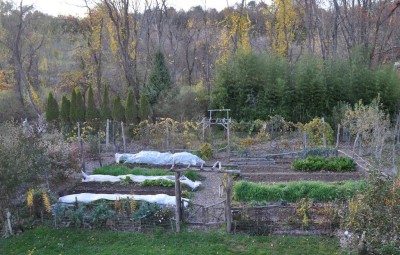
The garden is far from over. I’m now reaping what I sowed, beginning back in July and continuing into September, of lettuce, endive, radishes, turnips, spinach, and other vegetables that enjoy this cool, even frosty, weather. Last night we enjoyed a delicious stir fry including kale and leeks, and a salad overflowing with lettuces, arugula, radishes, parsley, and carrots.
**********************************************
The now sad-looking tomato vines, the result of the October 9th freeze, and another one on the 12th, just have to go. Not only do they cast a funereal pall on the otherwise lush scene, but also could provide inoculum for tomato diseases next year. Not the blackened vines per se, but any old tomato vines, leaves, and fruits.
So one one by one I cut the vines free of their bamboo or metal stakes and toss every bit of tomato debris into the garden cart. The ground is littered with fallen and rotting fruits; they also get gathered up. Even any dried, old leaves that catch my eye.
The leaf spotting diseases, septoria and early blight, wait out winter on tomato debris — not tomato roots, though — and then awaken in spring to lob spores of these infections onto new plants. Besides a thorough cleanup, blanketing the ground each fall, after cleanup, with a 1 inch depth of compost also limits new infections by putting a barrier between spores and next year’s plant. And next year, as I do each year, I’ll plant tomatoes where tomatoes haven’t grown for the previous two years.
All these machinations do nothing for late blight disease, which devastated tomato plants throughout the Northeast last year. Spores of late blight hitchhike up here from overwintering sites in the South when winds, temperatures, and humidity are just right.
**********************************************
A new bad boy has turned up “on the block:” Japanese stiltgrass (Microstegium vimineum). It’s been slowly invading the Eastern half of the country for awhile, first documented in Tennessee in 1919, probably after arriving from Asia in some packing material for porcelain.
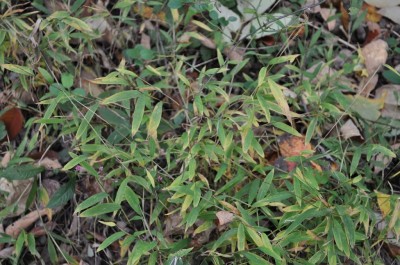
You don’t have to search far to find this bad boy. Just look for a sprawling grass that typically grows on the edges of and within the woods. It would grow a couple of feet or more high if it didn’t sprawl. Look more closely and you’ll see that the 3-inch-long leaf blades each has a distinct, silvery midrib. Flower spikes rise in late summer, which is also when the whole plants begin to develop a purple tinge.
Stiltgrass is an annual (like beloved crabgrass, native to Europe) so one way to control it is by mowing in late summer, just when it flowers, to prevent its re-seeding. Mowing earlier in the season just lets it regrow and flower — and make seed — more quickly. In small patches, the plant is easy to just grab and rip out of the ground, especially later in summer.
[houseplant scale, bean beetles, orchid]
/2 Comments/in Gardening/by Lee A. Reich
This year, I’m determined minimize the number of scale insects that hitchhike into my home as I bring potted citrus, gardenia, and orchid plants indoors. So beginning 3 weeks ago, every Monday I started dousing the plants with a relatively nontoxic spray, soap. (Nontoxic to just about everything except those scale insects, that is.)
Soap is a contact killer for insects, causing death by collapsing cell membranes, resulting in contents leaking out of cells and dehydration. Sounds gruesome, eh? It’s that or letting the scale insects weaken plants and drip their sticky honeydew, which they exude, on leaves, furniture, and carpet through winter. Fungi then move in to gobble up the honeydew, casting a dark shadow wherever it has dripped. Sounds worse, eh?
Scales are tough little critters protected for much of their life beneath a protective shell while they sit in place sucking the sap out of a plant. They’re most susceptible to the effects of soap before they find a place to settle down, put up their shell, and eat. That’s why I’ve sprayed every week. I want to get newly hatched ones while they are in transit looking for a new home.
Traditionally, gardeners have used various kinds of hand soaps for killing insects. Commercially available “insecticidal soaps” have a slightly different and more effective formulation. I couldn’t find my commercial insecticidal soap, so I just mixed up some liquid castille soap (similar to Dr. Bronner’s) at two and a half tablespoons per gallon and sprayed that instead. I finally found my container of commercial ‘Safer Insecticidal Soap’ this week and will use it for these last couple of sprays.
After the next spray, I’ll thoroughly drench the leaves and stems of the plants with water and then move the plants indoors. Scale insects are hard to eradicate, so I’ll keep an eye on the plants in the coming months and spritz them with more soap if needed.
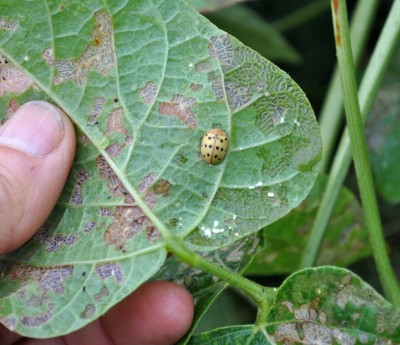
*****************************************************
Mexican bean beetles are one immigrant that should have been deemed illegal and not been allowed to cross our borders. Of course, beetles are hard to stop. And they’ve been around a long time — they were in the Southwest back in 1850 — so could be considered naturalized.
This year I may have neglected this problem, which shows up every year in my garden, for too long. Or, perhaps the beetles have been more voracious than most years. Either way, leaves of my bean plants are lacy from beetle banquets.
All because of the beetles, I had to give up growing pole beans years ago. Pole beans’ long season provided too continuous a food supply for the beetles. So these days I grow bush beans, making 3 or 4 plantings at intervals through the growing season, pulling out and composting older plantings as soon as they get too many beetles on them. This year’s especially bad infestations of bean beetles also might be the result of my sowing new plantings too close to older plantings.
Beetles notwithstanding, I have not yet had my fill of beans. It’s too late for another sowing, of course, but a couple of weeks ago thought it might still be worth trying to kill the pest. Back again to that ‘Safer Insecticidal Soap.’ The soap is most effective against soft-bodied insects so should shrivel up the voracious, soft-bodied yellow larvae. Perhaps it would also kill the adult beetles.
Too late. This late in the season, there’s not enough light and some days not enough warmth to get the bean plants to sprout new leaves and beans. Into the compost pile they go — along with the beetles.
One nice thing about growing a diversity of fruits and vegetables in a home garden is that, despite bugs, drought, or other agricultural calamities, there’s always plenty of something to harvest. Even with the worst case scenario of a beetle-induced end to this year’s bush beans, my scarlet runner beans, a different species of bean and planted mostly as ornamentals, are still bearing plenty of ugly but tasty green beans.
*******************************************************
Some people are intimidated by orchids; I was once. Then, about 20 years ago, a local orchid enthusiast gave me some orchid plants, what must have been easy to grow orchids with the not so easy to

speak name of Odontoglossum pulchellum. Every winter, slender flower stalks emerge from among the fat pseudobulbs of these dainty plants, which I have multiplied over the years. Along those stems unfold elegant, small, whit
e flowers, fragrant and seemingly sculpted from porcelain. The flowers stay around to brighten up winter days for almost 2 months!
My orchids is just one of the over 25,000 species of orchids, from which there’s something for anyyone according to your floral likes and green thumb.
[garlic, amaryllis, blueberry]
/0 Comments/in Gardening/by Lee A. Reich
I may have committed sacrilege with the “stinking rose” last week: I planted it. The stinking rose is another name for garlic, and the recommended time for planting is around the time of autumn’s first frost, which hasn’t yet happened and isn’t in the immediate offing. In fact, to my way of thinking, I got my garlic in a little too late this year, only because I couldn’t decide where to plant it.
Once a garlic clove is planted, it starts to grow roots and usually pushes a few leaves up out of the soil. Come winter, those leaves might die back; then again, with snow cover, they might not. Other gardeners fear that dieback of leaves in winter will hurt the plants but I’ve never noticed any such bad effect. A little mulch over the plants in early winter should allay any such fears.
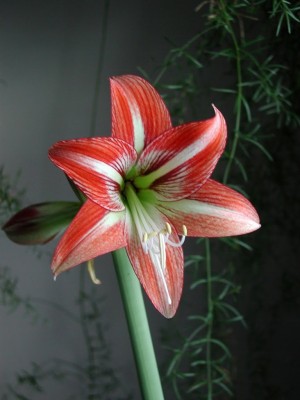
The more leaf growth you get from garlic before long summer days initiate bulbing, the bigger the resulting bulbs. And the more root growth that garlic makes, the more nutrients can be taken up to fuel more leaf growth. That’s why I plant garlic as early as possible, often in August. I want my plants to get started making roots as soon as possible.
Come spring, roots are in place and ready to nourish new leaves. The earlier I plant the year before, the more roots the cloves have in spring and the bigger the bulbs I harvest in summer.
*************************************
Speaking of hardy bulbs possibly brings me to amaryllis, that gaudy, humongous flower more correctly called by its true botanical name, Hippeastrum, and so popular around Christmas-time. About now is when we are directed to let our potted amaryllises (I might as well use the common name) dry out and experience some cool temperatures for a few weeks. Kept thi way for a few weeks, the bulbs can be awakened in a couple of months with warmth and water to bloom again for Christmas.
Amaryllis Myth Number One is that the leaves dry out once watering ceases. The leaves never dry down, despite the assertion of so many “authorities.” I’ve let my amaryllises go without water for weeks; the leaves become flacid but remain as green as ever.
I learned what seems to be Amaryllis Myth Number Two when another gardener recently showed me his lush-growing amaryllises growing as perennials amongst other greenery blanketing a slope. Amaryllis is not supposed to be hardy outdoors where winter temperatures drop lower than zero or 10 degrees F. These were (and true Amaryllises, as opposed to Hippeastrum, definitely are). Ground cover, whether snow, mulch, or other vegetation, as well as microclimate can have great influence on how cold temperatures plummet to just a few inches below the ground.
I’m not a big fan large-flowered amaryllis so am more than willing to risk planting mine outdoors. I have a bed along the sunny, south wall of my house which has become a dumping ground for miscellaneous plants. Perhaps I’ll plant it there. Perhaps I’ll plant it in my blueberry bed in which also allegedly non-hardy gladiolus bulbs have been coming back year after year for over two decades. Either way, I won’t be seeing those gaudy, large amaryllis blooms at Christmas-time; if they survive, they’ll bloom in spring.
************************************
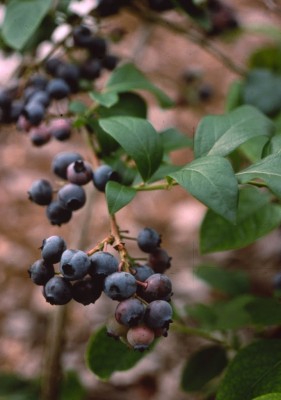
I had pretty much given up on fresh blueberries for the season — after all, it’s past the middle of September. And especially this year, since everything began early, with the first blueberries ripening about the middle of June. Yet Deb came strutting into the kitchen this morning, especially proud of the overflowing bowl of blueberries and raspberries she was carrying.
The blueberries were of the variety Elliot, and they were delicious. The secret to nonstop blueberries all summer long is to plant a few varieties ripening at different intervals throughout the season.
I’ve sometimes asserted that anyone with some sunny ground who does not plant blueberries is a fool; I’d like now to extend that assertion also to raspberries. Like blueberries, the raspberries you can grow taste better than any you can buy because they can be picked truly ripe and can be of varieties selected for flavor rather than for commercial attributes. My favorite varieties are Caroline, Fallgold, and Cuthbert. Another plus for backyard raspberries and blueberries is that they needn’t be doused with the pesticide sprays to which most commercial raspberries and blueberries are exposed.
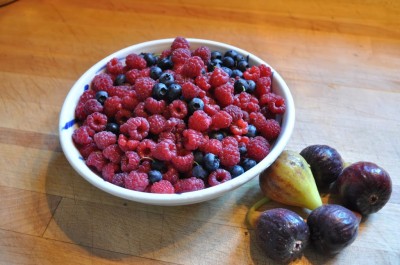
One more reason to grow raspberries and blueberries: They’re easy. Mine get mulched in autumn and pruned in spring. To fend off birds, I also cover my blueberry planting with a net, which I’ll remove within a couple of weeks, by which time I expect the blueberries really will be finished for the season.


